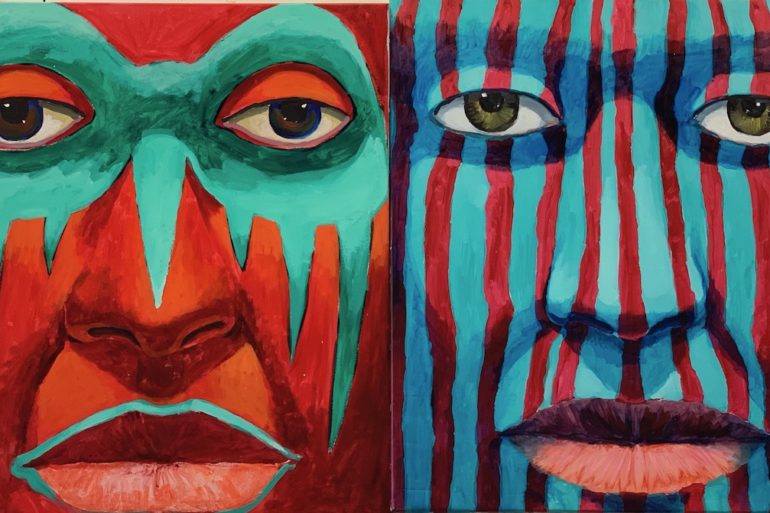
This post is also available in:

Entering the multi-faceted Frank Hyder’s studio is truly an exciting sensation, a riot of colors that furnish the spaces in which there are paintings, sculptures, inflatables and engravings, a full immersion in his works.
Frank Hyder is a long-standing artist who has succeeded in combining love for art by joining two different artistic perspectives: that of the artist with whom he elaborates his social message and that of the artist, founding, with the collaboration of his inseparable wife Helen, the Projects Gallery. “Today more than ever a work of art is considered as such if it is salable, if it is able to create business, to the detriment of the freedom of expression and the work body of the artist, very often not considered or not protected”, says Frank Hyder. The aim of the Projects Gallery, from which it is also represented, is to promote and protect the artist and his freedom of expression by freeing it from the concept of exclusive exposure in a traditional gallery, through different exhibition models that aim to enhance the individual in a mood in keeping with the expositive attitudes of the 21st century.
After being in Caracas for four months, guest of Sofia Imber, founder of the Museum of Contemporary Art of the city, who called it the best discovery, he came into contact with numerous Latin American artists and galleries who were also based in Miami, where he decided to open a studio and where, since 2008, he has been shuttling between Philadelphia, the area in which he was born in 1951.
Miami according to Hyder, in addition to being an exceptional melting-pot of cultures, constitutes the media reference point of the Americas: a city with a very interesting artistic profile that reflects the modern way of conceiving art. The need to find a foothold in Miami, combined with the economic crisis that hit America in 2008, led him to buy a beautiful studio in the artistic area par excellence, Wynwood, bought when the neighborhood was still a poor area, far from Miami Beach tourism and from the gentrification that led it to be the nerve center of the city’s artistic life.
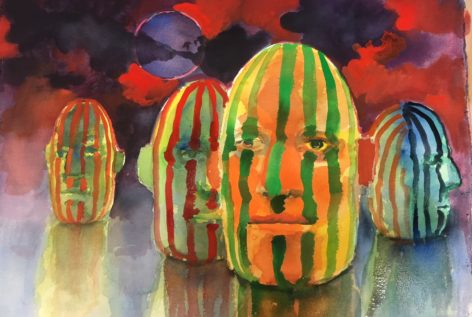
He has a very respectable curriculum vitae. He graduated from the Maryland Institute College of Art in Baltimore, Maryland, one of the oldest artistic colleges in the United States of America, where he was selected among the artists who gave luster to the institution to celebrate the 160th anniversary of the foundation. He was also selected to attend the renowned and hyper-selective Skowhegan School for Painting and Sculpture, Maine. He then earned his MFA from the University of Pennsylvania in Philadelphia, a prestigious school, where he studied with important figures from the contemporary art scene including Al Leslie, Brice Marden, Neil Welliver and Alex Katz.
His mastery of his art is horizontal and combines the knowledge of techniques with knowledge of events and love for nature, which he has decided to live in on more than one occasion. Upon obtaining a Senior Fulbright grant in 2000, Frank returned to Venezuela for a second extended time, accompanied by his wife and four youngest children (he has 6). Living in the Rainforest, he totally immersed himself in nature and in his art (a bit like Gauguin did in his time in Polynesia). In 2017 when as a resident artist aboard Oceania Cruise Line, a cruise line that has included his work in their collection of fine art on all of their ships, he was Artist in residence for a whole month between French Polynesia and Lima, Peru, allowing him to see the Easter Island monoliths in person, inevitably influencing what had been a drawing of its inflatables still linked to the simple shape of an egg.
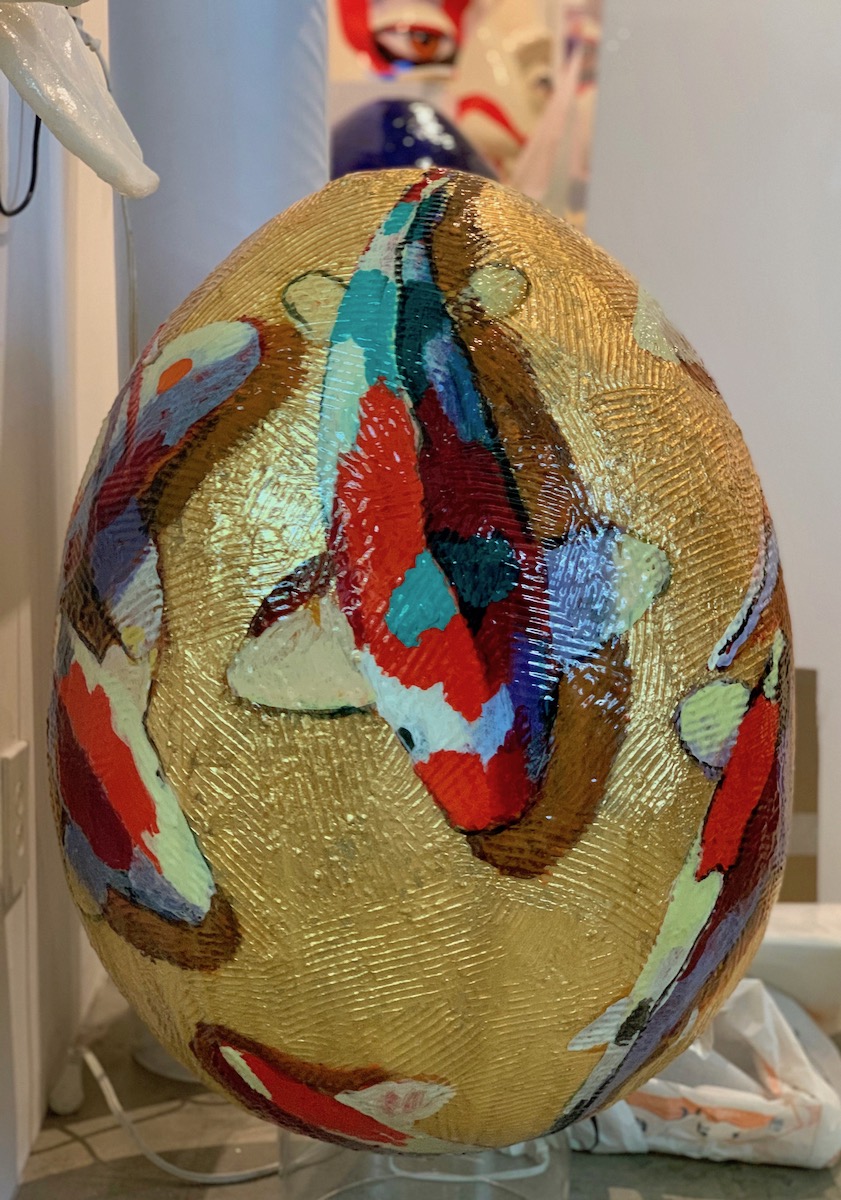
It is interesting to hear how Frank manages to extrapolate historical anecdotes, myths and beliefs that suggest that, beyond the immediacy of the artistic messages conveyed by his works, there is a profound definition of the cultural meaning that probably also refers to his past as a teacher. He was a full professor for almost three decades at the Moore College of Art and Design and a member of the Faculty of Fine Arts of the University of Pennsylvania. He has more than 200 groups and 100 personal exhibitions scattered around the world, including about fifteen in New York. He was among the few North Americans to have had the honor of having a personal exhibition at the Museo de Arte Contemporaneo de Caracas, Sofia Imber (MACCSI), founded in 1973. He has works exhibited in important collections, including: the Library of Congress and the Philadelphia Museum of Art, the La Salle Museum, the James Michener Museum of Art, the Museum of Modern Art of Caracas, the Museum of Contemporary Art Zulia, of Maracaibo, and among the installations of private collectors appears Sir. Elton John.
His work was selected by Sotheby’s in 2012 for the great event of the auction following Fabergé: The Big Egg Hunt in New York, presented by Fabergé and included 280 artists including Jeff Koons and Julian Schnabel. In the presentation of his work, Fish Egg (Acrylic paint, fibreglass and golden leaf). Frank Hyder has cleverly associated his fish with the Fabergé image dating back to the origins of the brand, combining the iconic image of the egg with its historical meaning , which refers to the Russian imperial family and the black gold of Russia: caviar, around which wars, religious clashes and legends have intertwined.
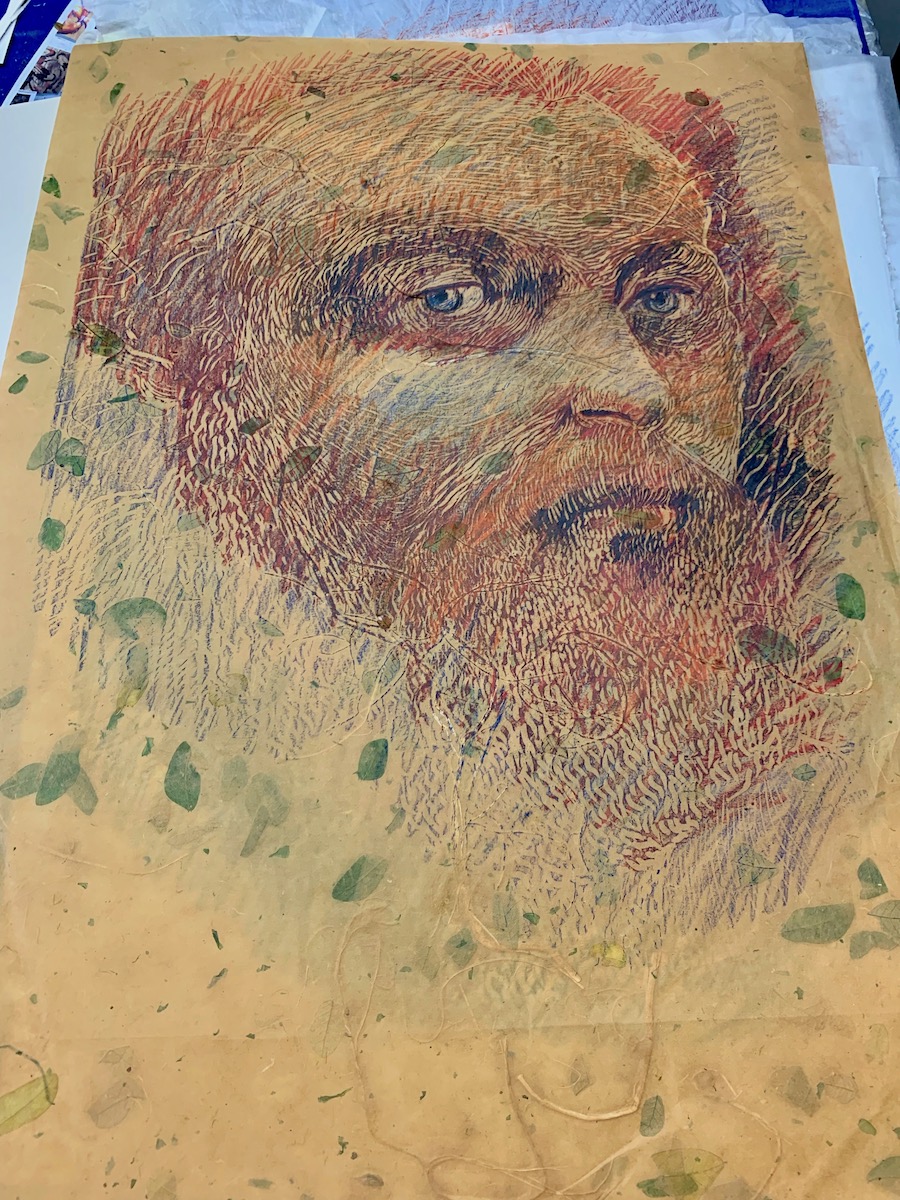
He began to get interested in the forms of nature (in particular fish) during his year of study in Venezuela. (Two Directions, mixed media on carved wood and Golden Rhythm, mixed media on carved wood and golden leaf). The elongated shape of the fish represents in its essence an elementary form that can be seen as the image of the bottom of a boat, or the shape of the silkworm’s cocoon has another important meaning because art, like the rebirth of the cocoon undergoes evolutions, changes of perspective and mediums means with which to represent reality or communicate social messages. Frank Hyder argues that it is necessary to adapt art to eras: “People want art installations but they also need to be able to see first-hand, to materialize the artistic experience today dominated by digital installations and LEDs”.
To favor this tactile and visual combination the artist has created, always on the basis of the elongated shape, three-dimensional canoes that refer to primitivism and nature. There are several along the corridor that leads to his studio: Built in bamboo or with tubular, cpvc, covered with collages of xylographic prints, which, combined with the fabric the ballerina tutu is made of, favor the tactile experience ensuring the strength of the structure without compromising transparency, allowing the light inserted on the back to penetrate and create a splendid pattern of lights and designs. For some of these canoes, as for other works, gold leaves have been used,giving additional warmth to the light that penetrates inside, spraying the work with warm light. The images on the canoes represent fish, but also images of people in people, a symbolic meaning that refers to the creation of Adam and Eve: the primitive nature of man, the genetic thread that connects every man with his past and his present . (Amazonas Installations exhibited at Art Miami in 2006).
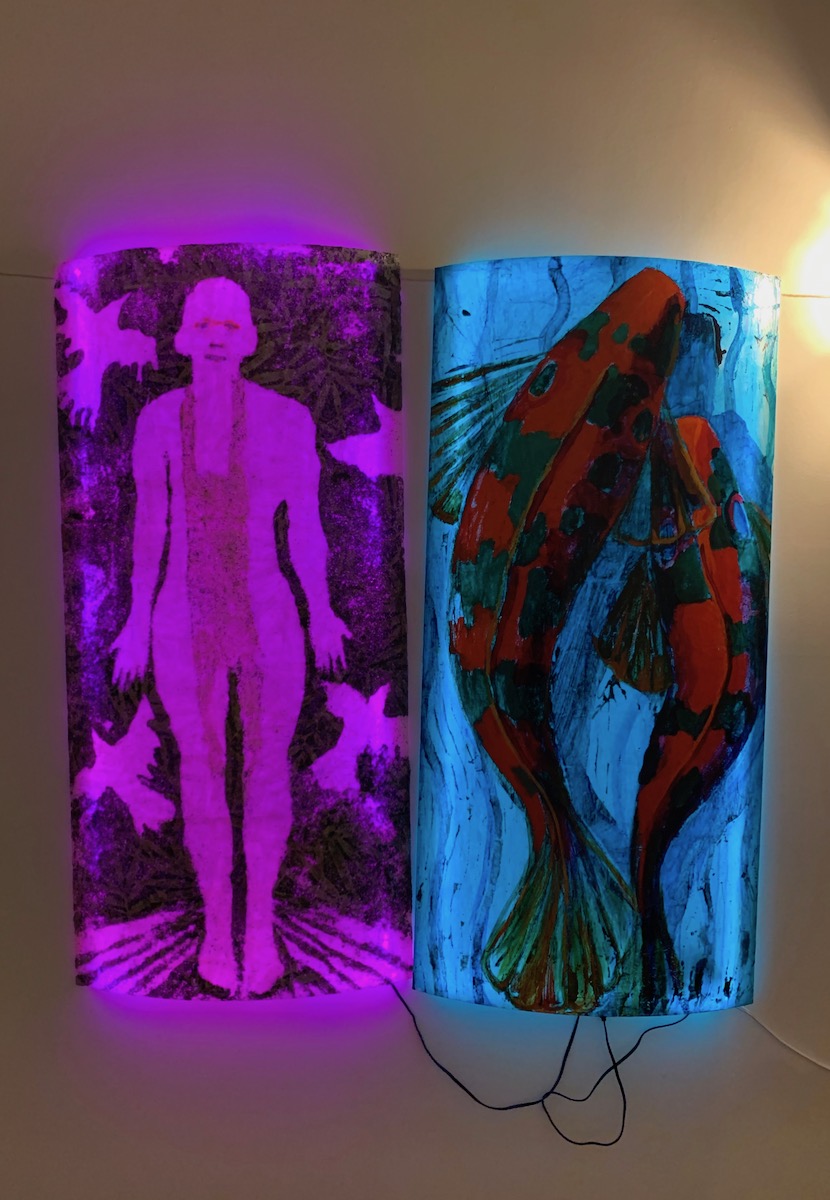
Frank Hyder is a master of the art of engraving both on wood and metal with a particular predilection for wood like the great masters of the past, among these undoubtedly Albrecht Dürer who refined his woodcut techniques, but also the lesser-known master of realism Northern Netherlands: Claus Sluter, (about 1300/1400s). A good 75 years ahead of the greats of the Renaissance, Sluter composed Le Pleurant ((Mourners of Dijon): particularly suggestive sculptures commissioned by the Duke of Burgundy to pity and accompany their dead at the burial site. The work had a great impact on Hyder who wanted to reproduce the drama of the event using wooden boards. Through the carving and reassembly of wood, Hyder has managed to create extraordinary attractions that are able to render the three-dimensionality of the works even though they are not sculptures but carved wooden boards. The acrylic and linen placed at the ends of the boards give the works the idea of the hoods of the monks of Le Pleurant.
The artist has also recorded large-scale works in the same way, real gates, one of which is set up at the entrance of the building in his Philadelphia home/studio/gallery. And he passed with the same enthusiasm from engraving to xylography, from painting to sculpture with very innovative materials.
Through the comparison of his artistic techniques, for example the composition of Self Portrait of 1980, and the whole series of frottage that followed, it is easy to see how his art has advanced by more than forty years some of the most prestigious works composed between the walls of the Wynwood Wall. Frank Hyder is a very active artist also in the Street Art environment, because besides having participated in the creation of murals (Life Cycle a composition on 18 panels composed of ceramic tiles at the Freezer Terminal, Oxnard, CA), he knows and collaborates with the artists for whom he even managed to organize a summit in Mexico, in 2012, in the presence of the daughter of the largest Mexican muralist: Diego Rivera.
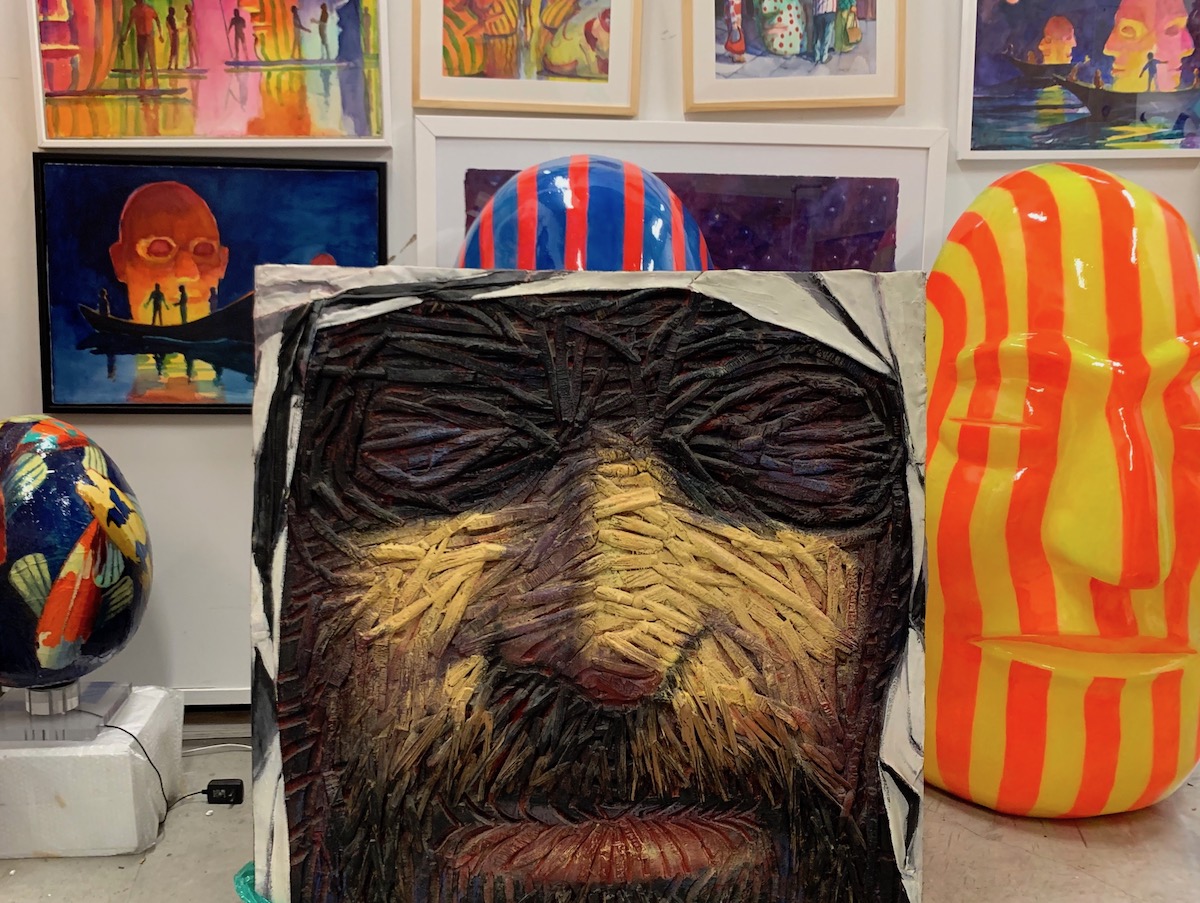
His body of work has explored different artistic subjects: from figurative scenes of subjects with a pool background (Shaping Up 1975, ink on paper,), body or part of body (Head to Toe, oil, pastel and ink on carved wood), nature (Child’s Play, mixed media on carved wood) up to the current works of The Janis Project which has also become his artistic signature. If you happen to see bi-facial sculptures of different colors, jovial and serene looking around the world, you are admiring the inflatable works by Mr. Frank Hyder, who with all sincerity, and faithfully also represent the gentle spirit and generosity of the artist. The Janis Project was born with the intention of launching a poetic message of tolerance to humanity pervaded by forms of ferocious racism. Janis represents something that unites all people, favoring empathy and integration: “They are apparently different monoliths (the two colors), without distinction of sex, race or culture, different in appearance but identical in heart and spirit” , says Frank Hyder.
The Janis Project takes on the connotations of the monolithic sculptures of the Easter Island mixed with the almost identical faces of the Roman Janus coin that found in the image of Janis the right medium aimed at the purpose. The project finds the maximum communicative expression of the message in the inflatables due to the large dimensions that can even reach 10 feet (3 meters) and is composed of sculptures in glass-resin, bronze and concrete with smaller sizes, as well as by works painted on paper and canvas. Of the latter, Frank Hyder counts over 200, with vibrant colors and composed mainly of watercolor and acrylic. They are the result of six months of immobility following a car accident in Miami that literally broke his legs leaving him in a wheelchair to draw exclusively from his imagination and some photos taken in Europe that portray Janis in emblematic places: a sort of imaginary journey that places Janis among the ruins of Pompeii, where at the time the bronze works of Igor Mitoraj were exhibited with the Contini Gallery in Venice, rather than along the river of the Amazon Forest, where an ancient history of the pre-Columbian tribe Chimu tells how the tribal chief used to go out with his boat and sprinkle himself with gold dust so that when the sun came up, his skin could join the skies to the earth, to then return naked to the mainland and celebrate a dance that allows not to forget the sun and wish to live a year in his company again.
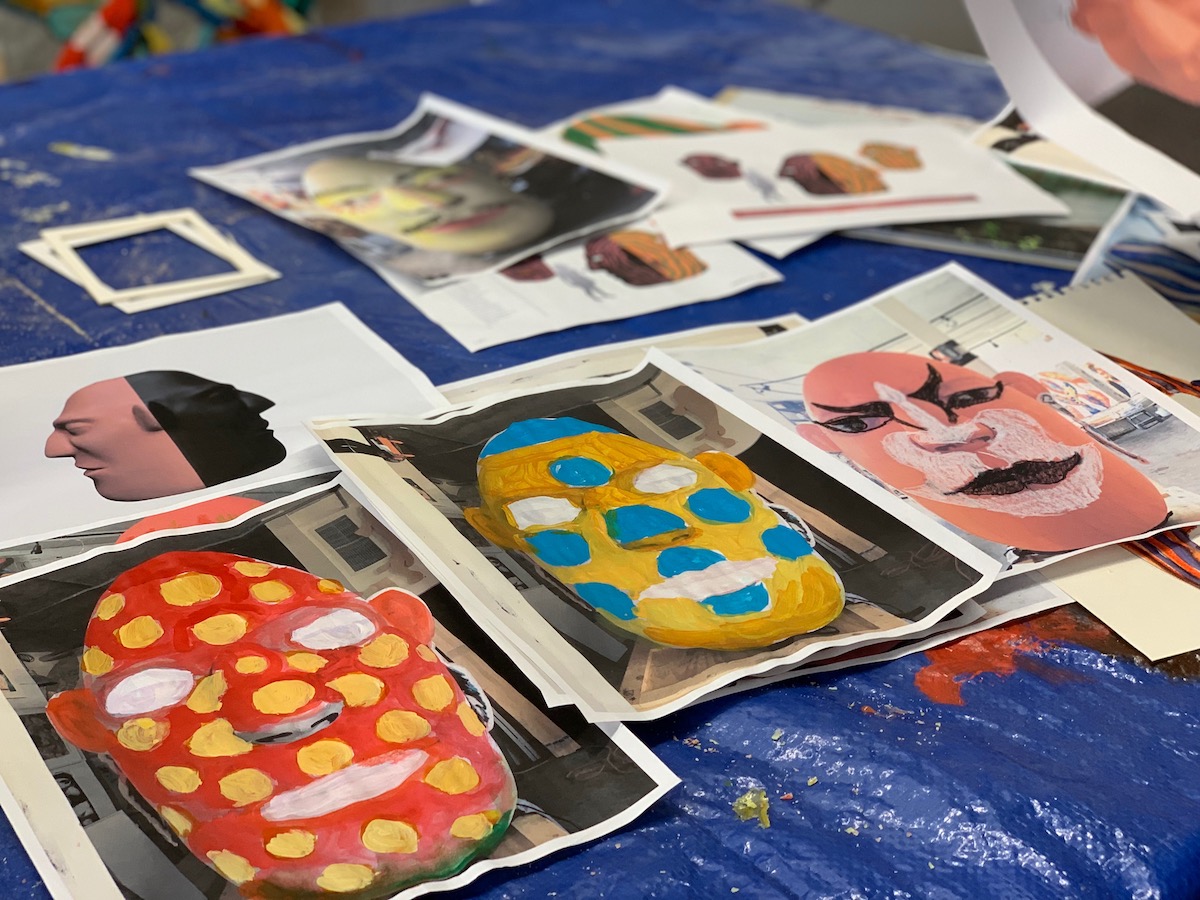
With his inflatables, Frank Hyder remained faithful to his style modernizing the artistic medium employed which, starting from the shape of an egg, he studied until he had full control of it with the Janis project. Frank Hyder’s first inflatable work dates back to September 2008, when a Cuban artist wanted him to collaborate on the Giants in the City project, with exclusively inflatable works of art. Since then Janis, appears in the key points of the most famous places in the world: Spain, Italy, Greece, Canada, China, Vietnam and many others. Made of very resistant nylon (it is the same material that the parachute is made of) it is combined together in different weights which, if equipped with internal light, allows transparency and light propagation. The inflatables are light but anchored sculptures that withstand winds of up to 40 miles per hour and are very practical to open, close and carry around the world, an option that has given Hyder the opportunity to travel the world with his propitiatory message.
But the artistic work of Frank Hyder does not end here because, while we are talking, he is already experimenting with new materials. He is currently working on a special bronze work, commissioned, weighing 500 pounds (about 230 kg).
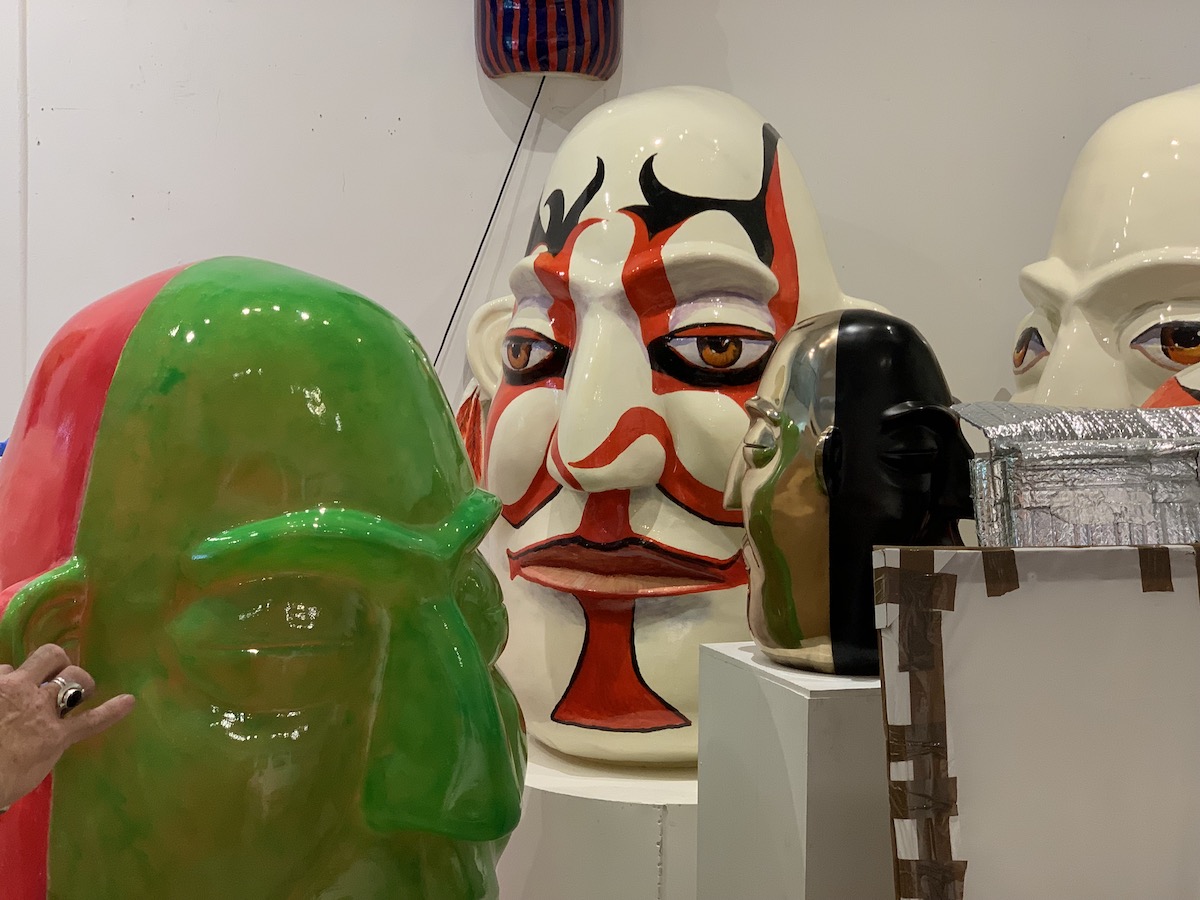
Frank Hyder will be participating at Context during the week of Miami Art Week, and we don’t have to wait to be fascinated in first person by these good and colorful giants, large or small, we just have to visit the local Cornell Museum in Delray Beach where the current exhibit features 6 inflatable pieces of different sizes, several watercolor paintings and a fiberglass sculpture. These pieces will be exhibited until October 6, 2019.
.

Thank you for a wonderful article on a most gifted, inventive, dedicated artist….in the truest sense of the word. He goes where the passion, curiosity and interest take him….rather than trying to follow the ‘market’.
The real question is, of course, does he ever sleep? And thank you for your nod to Helen whose brilliant behind-the-scenes work provides Frank the freedom to create.
Thank you: Great works need great man, and woman.
Frank, you have out done yourself.